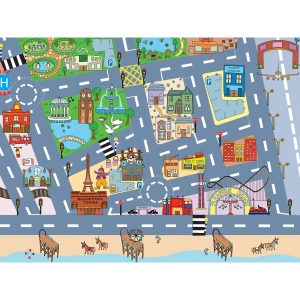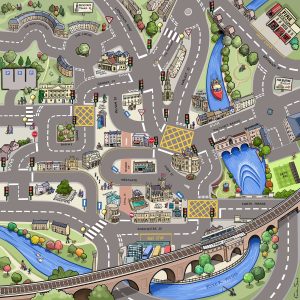Human brains aren’t fully developed at birth and as they change throughout childhood our capacity to remember improves. Memories are essential for our social, emotional and cognitive development as they form the basis of our sense of self and our ability to learn. The simple act of playing with an educational toy in the early stages of a child’s life can profoundly impact their ability to form memories, and thus their cognitive abilities.
What are memories made of?
Our brain consists of around 86 billion nerve cells, called neurons, which transfer information by electrochemical signals via synapses (tiny gaps between the neurons). Our brains receive sensory information (for example something we see, hear or touch) that is processed in the outer surface of the brain (the cortex) and then transferred to other areas, such as the hippocampus. Here, cellular changes occur to strengthen this newly formed network of connections, creating a short-term memory. If the connections are strong enough, or we recall the event several times over the following few days, the memory is transferred back to the cortex for long-term storage.
There are over
neurons in your brain!
Even though the hippocampus is the most well-known part of the brain involved in memory formation, many interconnected areas have a role to play. For example, if you try and recall
a very clear memory, the chances are it has strong emotions attached to it. This is because the amygdala, the brain’s emotion centre, interacts with the hippocampus to strengthen memories and attach emotional significance to them.
Memory development
It used to be believed that the reason we can’t remember a lot about our early childhood (so-called ‘infantile amnesia’) is that we can’t form stable memories at a young age. However, we now know that infants and small children do form memories, for example from ages 2 to 3 children start to develop memory for facts and events.

From around 3 years, children form ‘cognitive maps’ enabling them to navigate easily in most familiar environments. At this age children can also learn to think about larger-scale spaces by using maps, allowing them to think about where something will be found and its physical surroundings, rather than where they last saw it.

In summary, memory plays an important role in a child’s development. Whether something is remembered and how it is remembered is intrinsically related to its meaning and experience, hence memories can be strengthened by increasing the number of sensory and emotional associations.

Dr Robert Hurford, University of Oxford
With a PhD in Neurology at one of the best universities in the world, we're very grateful that Rob was able to share his expertise and knowledge, then chuck it in this fantastic article especially for us here at Hippo Mat™. Cheers Rob!
Thanks for reading. Hopefully you learnt something - here's a 5% discount as a reward!
Enjoyed this article?




























👍
So what part of the brain is responsible for incessant whinging? I’m sure my children have an over-stimulation in that area! 😂